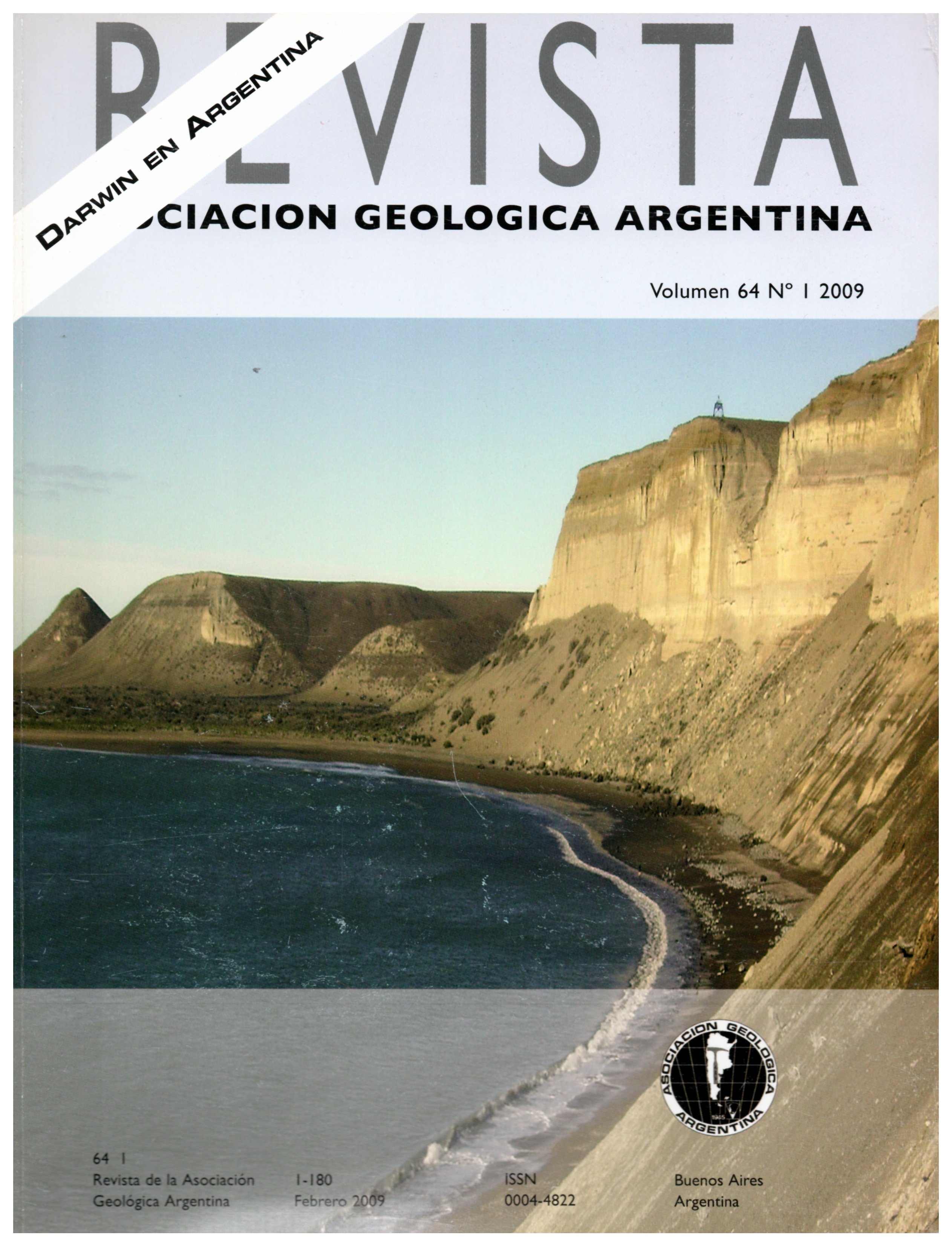Darwin's great patagonian tertiary formation at the mouth of the río Santa Cruz: a reappraisal
Main Article Content
Abstract
Theclassical section described by Darwin at the mouth of the Río Santa Cruz was a landmark in the later stratigraphy of the marine Cenozoic of Patagonia. Sedimentological and paleontological studies of rocks from the Monte León Formation at the Darwin and Mount Entrance sections - mouth of the Río Santa Cruz - suggest that they were deposited in an early Miocene inner shelf to subtidal - or even intertidal at the top - environment. The base of the sections is covered and the top is unconformably overlain by Quaternary deposits. The invertebrate fauna (mainly mollusks) mentioned herein - the earliest of which were collected by Darwin and described by Sowerby - were collected from the two sections with a detailed stratigraphic control. It includes brachiopods, echinoderms, scaphopods, bivalves, and gastropods. The similarity of this fauna with that one from the sections at Restinga Norte, Cabeza de León, Las Cuevas, Yegua Quemada and Monte Observación, all south ofthe study area, allow correlation with them. In addition to the equivalence ofthe faunas, sedimentological features at all these localities are also the same. Therefore, all the shell beds involved should be referred to the Punta Entrada Member of the Monte León Formation. The Monte Observación Member shouldbe restricted to its original use and included as a member at the base of the overlying Santa Cruz Formation, outcrops at Cerro Monte León and Cerro Observación.
Article Details

This work is licensed under a Creative Commons Attribution-NonCommercial 4.0 International License.
Nota de copyright
Los autores conservan los derechos de autor y garantizan a la revista el derecho de ser la primera publicación del trabajo licenciado según una licencia de atribución Creative Commons que permite a otros compartir el trabajo con el reconocimiento de la autoría y de la publicación en la que se publicó por primera vez.
Declaración de privacidad
Los nombres y direcciones de correo electrónico introducidos en esta revista se usarán exclusivamente para los fines declarados por esta revista y no estarán disponibles para ningún otro propósito u otra persona.

